MTS/IEEE OES OCEANS ‘16 K-12 Workshop
September 17, 2016
Polar-ICE is providing opportunities to expand teaching and learning innovations in middle and high school classrooms as well as enhance science communication. Funded by the National Science Foundation, Polar-ICE is connecting Polar scientists with educators and students through the use of data generated through cutting edge polar science research.
The objective of the Polar-ICE project is to engage students in understanding how polar regions influence our lives while improving their understanding of how scientists work and understand a changing climate system.
The activities we will focus on during today’s workshop:
Penguins Forging: Where and Why?
Ocean Robots & Data: What? How? Why?
Investigating Why Penguins Forage There: Piloting Gliders
Additional activities for your classroom:
Ocean Convergence: Let’s Get Together
Ocean convergence zones occur where water comes together in a specific area due to the meeting of two ocean currents or when the water meets the coastline. This often causes a build up in height of the surface. Anything floating at the surface collects in a convergence zone. The students will participate in a hands-on activity to explore how convergence zones collect particles in the water. Students will then look at Surface Current maps from Antarctica to find patterns in where convergence zones occur in the Palmer Deep area.
Penguins Foraging: Where and Why?
Adelie penguins forage by collecting Antarctic krill and returning to their nests to feed their chicks. Forage density is higher in convergence zones, as the penguins are more efficient at finding food. Students will experience foraging behavior of Adelie penguins by acting out foraging patterns and analyzing their data. The students will then look at distribution data of penguins foraging to determine what factors could influence the location of penguin foraging.
Polar-ICE Data Story: What drives patterns in ocean change?
The ocean varies immensely over space and time. But how can we understand what drives the patterns in the differences of the ocean over space and time? How might the differences influence what kind of animals lives where?
Palmer Station Antarctica LTER: Learning from a time series
Expand your Perception of Data! Review techniques useful to scientists as they analyze series of data that represent consecutive measurements taken at equal space/time intervals.
Palmer Station Antarctica LTER: Now you Sea Ice, Now you Don’t
Adapted from a lesson called: Climate Change from Pole to Pole, this lesson is intended for high school science students. The Western Antarctic Peninsula is a region experiencing rapid regional climate change. Students explore the topic using an interdisciplinary approach working cooperatively in groups investigating the biotic and abiotic components influencing the ecosystem dynamics. Students become specialists who gather evidence, graph data and have to formulate scientific explanations for their findings.
Created by teachers (Mary Ann Decker, Brenda Talbert), this lesson provides students with the opportunity to explore the differences in climate and ecosystems within Antarctica and between Antarctica and their local area. Students will locate and graph data to compare average temperatures, radiation and snowfall. Students will also demonstrate their knowledge of ecosystems of Antarctica by labeling a map.
- Lesson Plan
- Adam Wlostowski Video
- Antarctic Powerpoint w/ Sublimation
- Graphing worksheets: Lake Hoare| Palmer Station | Local Data
- Lake Hoare temperature radiation data
- Palmer Station data
- Sublimation PowerPoint
- The Lost Seal, by Diane McKnight

